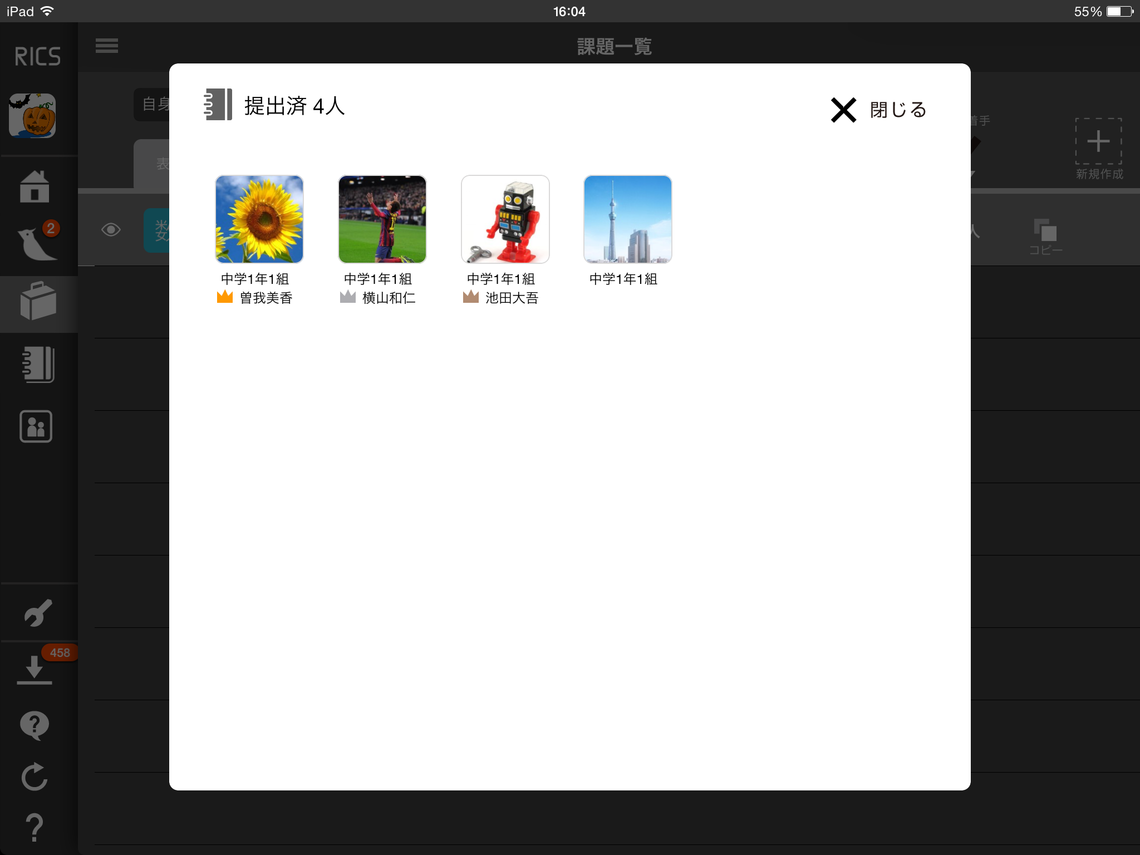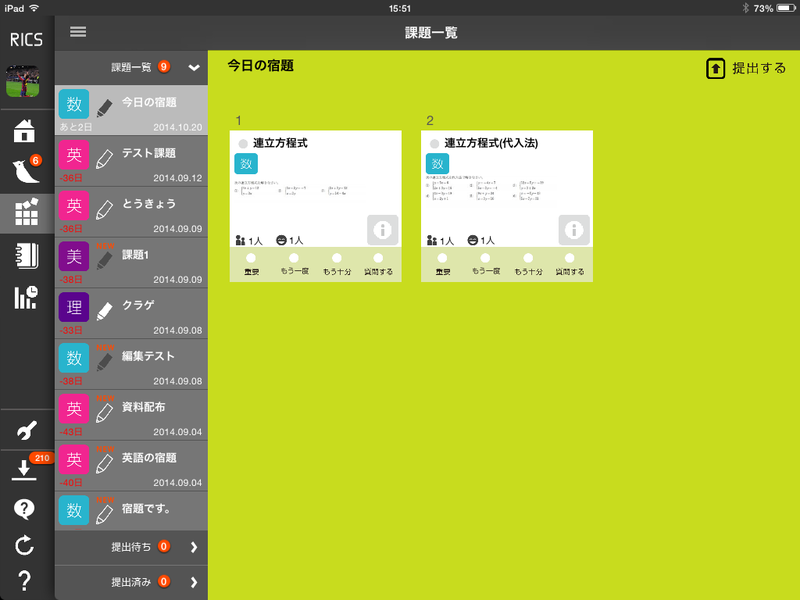In the previous column, we introduced the outline of the practical project "Adaptive Learning Utilizing SNS," launched in July 2014 by Ritsumeikan Moriyama Junior & Senior High School and Inolab.
This project involves approximately 500 new junior high and high school students and their teachers, each equipped with a tablet, utilizing optimized educational content during classes and home study. Named "RICS (Ritsumeikan Intelligent Cyber Space)," this initiative is progressing steadily with ongoing functional enhancements. About four months after its launch, we report on "Adaptive Learning Today" – what changes have emerged at the school and what feedback is coming from teachers.
An Active Learning Style Where "I Got It!" Exclamations Abound
RICS is primarily used in English and math classes and for home study. During lessons, teachers distribute prepared materials or pre-existing cloud-based assignments from publishers to students' devices. Students then review the distributed materials or assignments, think through answers, consult explanations, and input their correct/incorrect results and comments into their tablets. Once a problem is solved, students immediately tap their tablet to notify "Done!" This information is then shared with the entire class, revealing "the first student to solve the problem." This encourages faster problem-solving as students strive to notify the class sooner. Conversely, if a student struggles, they can readily ask for help via their tablet, saying "I don't understand, please help." We've also seen scenarios where students who finish quickly assist those who haven't yet completed the task. Additionally, teachers can now adjust the difficulty of the next assignment based on students' progress, provide more detailed explanations, or answer questions in real time. This makes it possible to conduct lessons that previously required ability-based class grouping, even in regular mixed-ability classes.

Teacher's screen. Students who have submitted assignments can be viewed in a list.
While various systems exist for distributing materials, one key feature of RICS is its content adaptation tailored to individual learning levels. Project members are grappling with the question of whether fully automated recommendations are always optimal for adaptive learning in a school setting, where teachers are actively involved. We are refining both the UI and logic through practice to make it easier for teachers to understand student progress and select assignments, and to ensure students can confidently choose and complete tasks during home study.
While we envision future adaptation based on individual learning styles (some students learn more efficiently through visual or auditory input rather than writing), we are currently in the data collection phase. By accumulating and analyzing diverse data—beyond just task correctness, such as response speed, accuracy rates, common mistake patterns, and preferred learning methods—we believe ICT use reveals insights that can directly inform classroom instruction.
Regarding home study, we currently group students by specific levels and distribute assignments and materials tailored to each group. However, another key feature of RICS—its SNS (communication) function—is crucial for sustaining student motivation. Students teach each other and learn together on a single assignment, and receiving material recommendations from close friends seems to reduce the feeling of studying alone.
Since the start of the second semester, we've received positive feedback from teachers expressing a desire to utilize RICS more effectively. Comments include requests like, "Please improve the accuracy when distributing assignments simultaneously so they can be used for tests," and "Instead of just using it to check assignments or review answers, we want a 'tablet-complete' system where students can input their answers."

Student assignment overview screen.
When we add new features in response to such feedback, delighted exclamations like "Oh, it's changed!" can be heard from teachers and students who notice the updates. Although it's only been four months since implementation began, I can feel the school steadily starting to transform.
What makes tablets so appealing to teachers?
One highly valued aspect is the elimination of paper preparation. Printing and organizing materials for dozens of students every class period is incredibly labor-intensive. With tablets, however, uploading a single document instantly distributes it to all students. "Just not having the burden of printing is a huge relief," they expressed with genuine appreciation.
What was also surprising was the fact that teachers beyond English and Math were frequently using RICS. We had only prepared adaptive learning content for those two subjects, yet many teachers were using RICS despite the lack of materials for their subjects. Among them, home economics teachers were making full use of it. It's very heartening to see it being widely accepted not just by young teachers, but by veteran teachers as well.
Currently, our project members are reaching out to textbook publishers to request collaboration on expanding content beyond English and Math. They are considering our proposal positively. This level of response wasn't present during the pilot test on Oki Island two and a half years ago, making us keenly aware of how times have changed.
The core presence of teachers is indispensable for the penetration of ICT education.
While RICS appears to be operating smoothly at first glance, it is not without its challenges.
For teachers less comfortable with IT or tablets, it can be difficult to accept. It's true that some teachers have never used RICS even once. To overcome this situation, teachers have suggested creating a portal site for them to exchange opinions and establish a support system.
We are also mindful of a slight gap in RICS adoption between the junior high and high school divisions. The key challenges seem to be bridging the age difference between junior high and high school students and reducing the burden on the core teachers driving ICT utilization.
Moving forward, we will continue to refine our structure while expanding functionality and enriching content. Together with Ritsumeikan Moriyama Junior and Senior High School, we will build new forms of learning, leveraging technology to establish a self-directed learning environment tailored to each individual.



